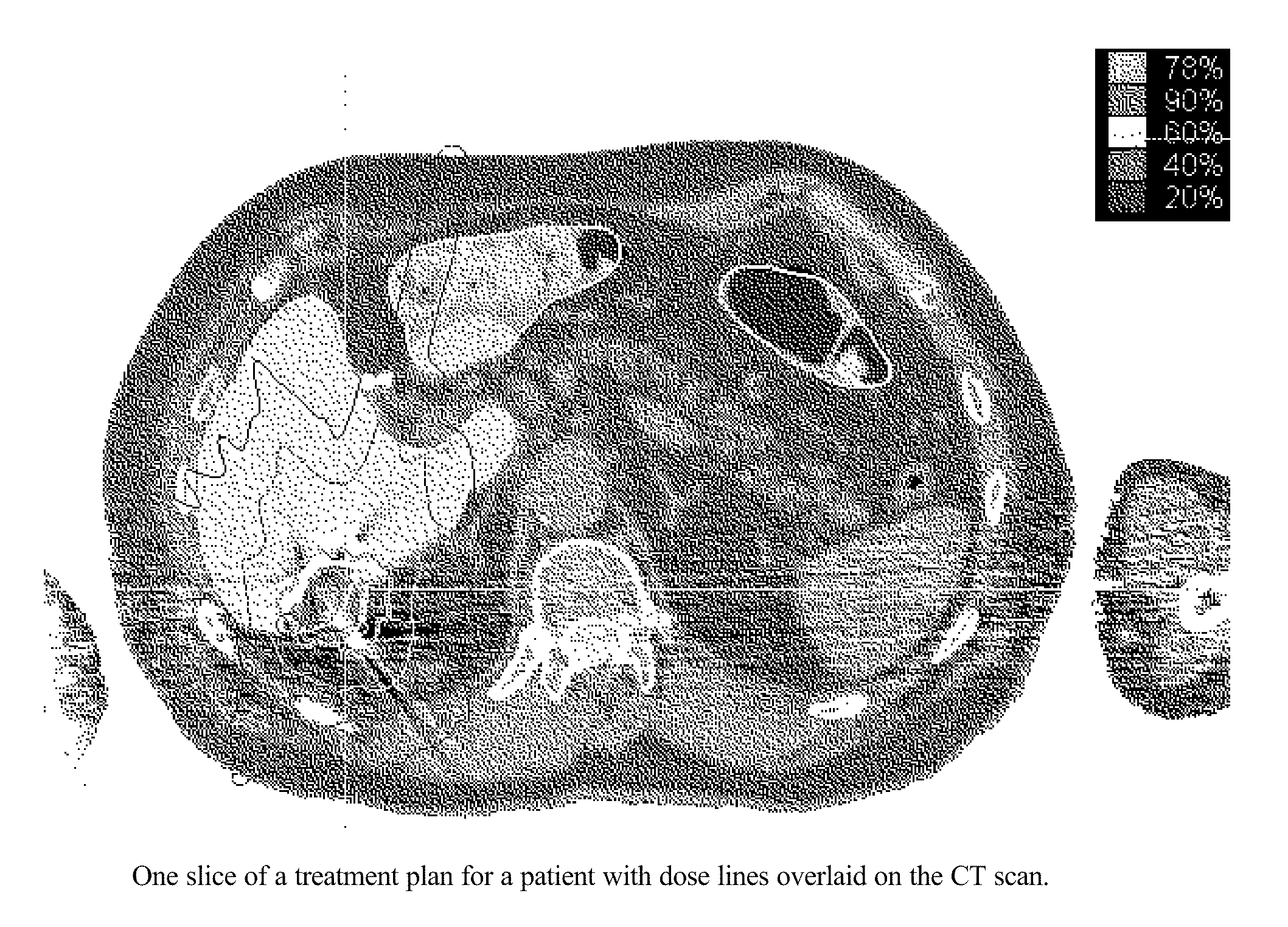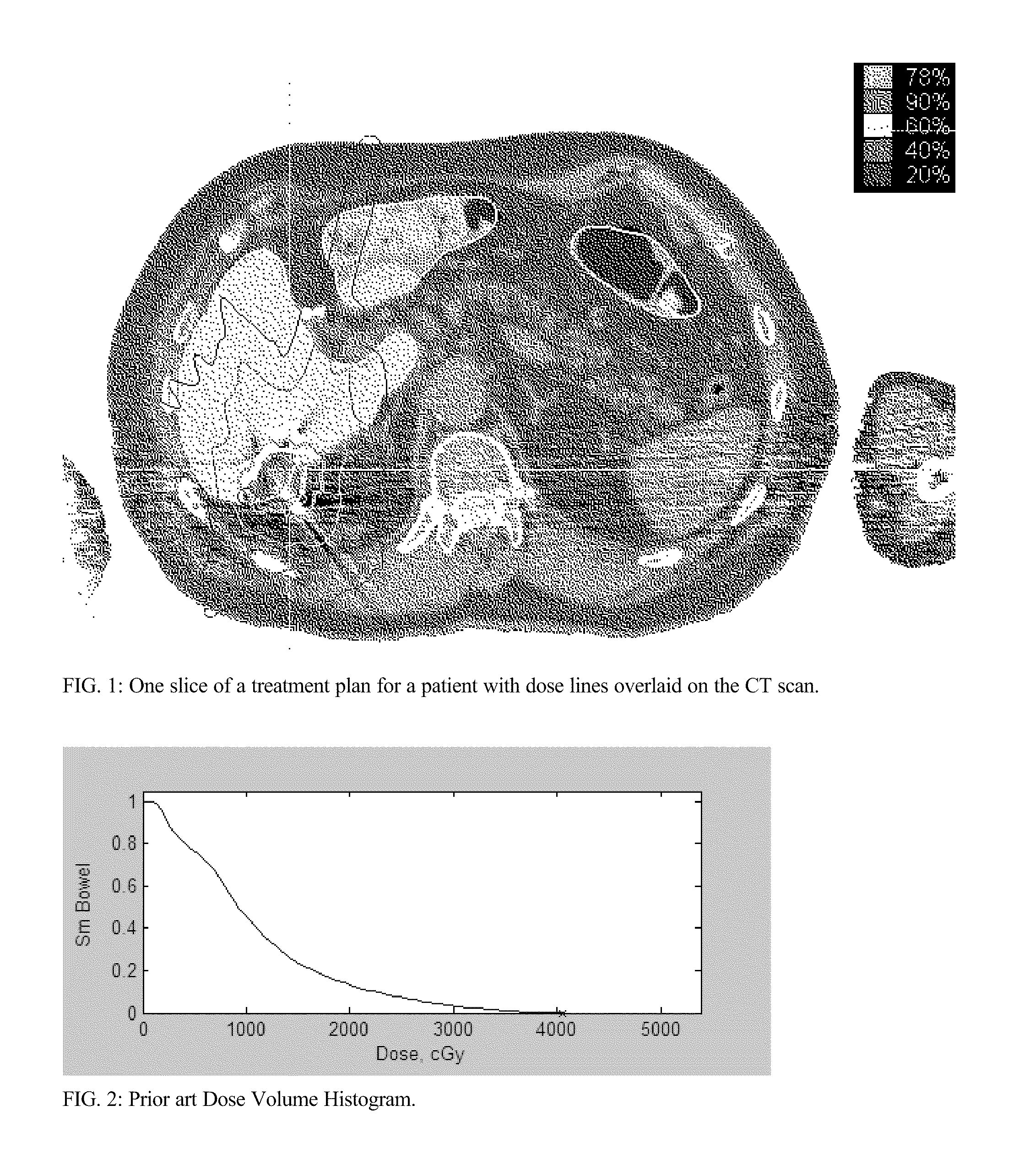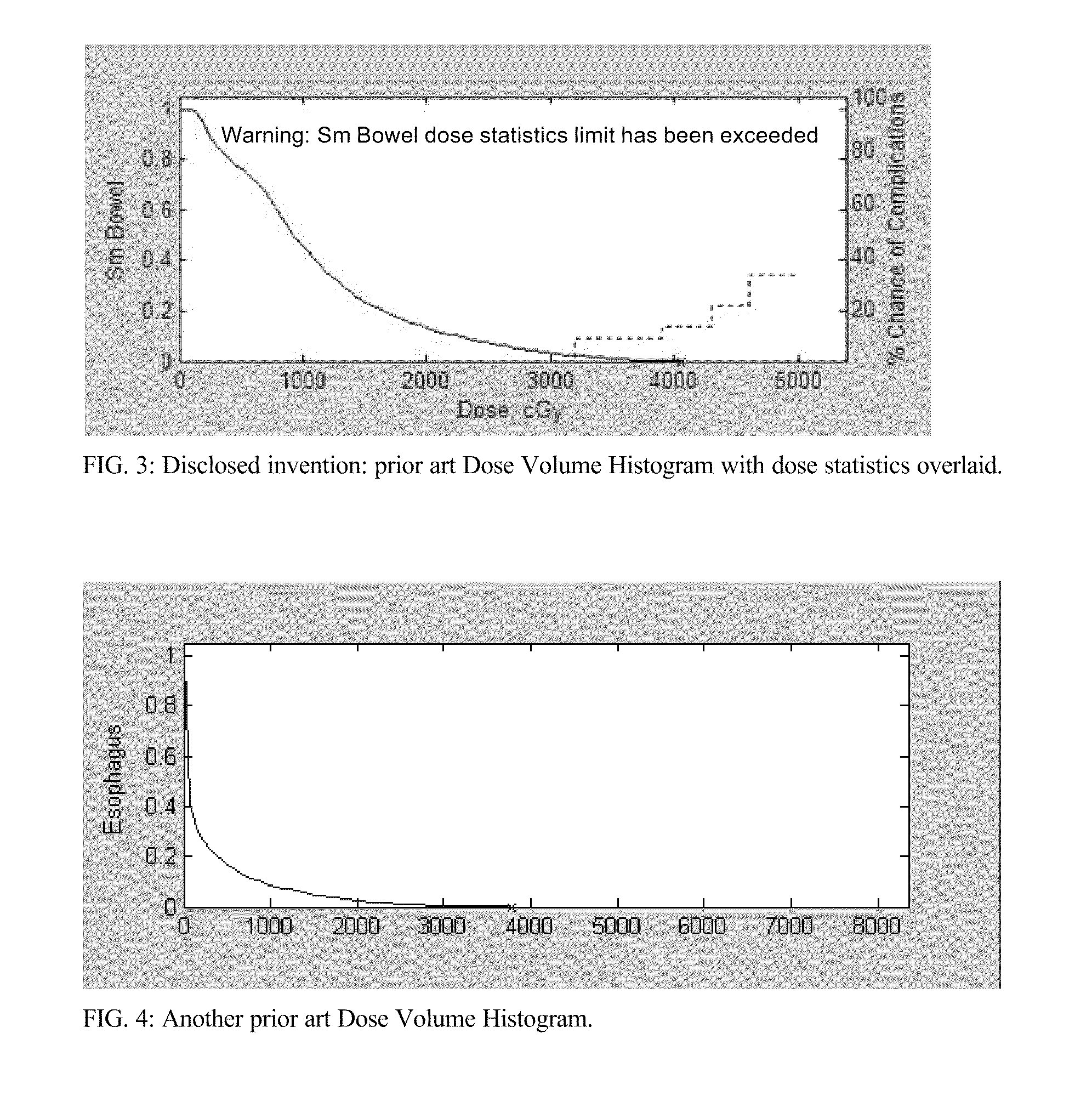Evaluation of Radiation Dose Tolerance Limits
a radiation dose and tolerance limit technology, applied in the field of radiation therapy treatment planning, can solve the problems of no treatment planning system overlaying dose tolerance limits onto the dvh, patient prior art fig. 4 being more hazardous to patients, etc., to improve patient safety and increase the risk of esophageal fistula
- Summary
- Abstract
- Description
- Claims
- Application Information
AI Technical Summary
Benefits of technology
Problems solved by technology
Method used
Image
Examples
Embodiment Construction
[0022]A DVH can be expressed as a plot of {right arrow over (x)}, {right arrow over (y)}, where {right arrow over (x)} is a vector of the range of doses in the plan, from the minimum dose to the maximum dose, and {right arrow over (y)} is a vector of the volumes of the anatomical structure receiving each particular dose. The dose {right arrow over (x)} and the volume {right arrow over (y)} may be expressed in any applicable units, either absolute units or in normalized relative units.
[0023]Similarly, dose statistics may be expressed as a plot of {right arrow over (x)}, {right arrow over (z)}, where {right arrow over (x)} is a vector of the range of doses of interest, from the minimum dose to the maximum dose, and {right arrow over (z)} is a vector of the estimated probability or percent chance of complications due to that particular dose.
[0024]Using this notation, the disclosed invention may be described by the flowchart in FIG. 6. The user can export the DVH data 620 from the treat...
PUM
 Login to View More
Login to View More Abstract
Description
Claims
Application Information
 Login to View More
Login to View More - R&D
- Intellectual Property
- Life Sciences
- Materials
- Tech Scout
- Unparalleled Data Quality
- Higher Quality Content
- 60% Fewer Hallucinations
Browse by: Latest US Patents, China's latest patents, Technical Efficacy Thesaurus, Application Domain, Technology Topic, Popular Technical Reports.
© 2025 PatSnap. All rights reserved.Legal|Privacy policy|Modern Slavery Act Transparency Statement|Sitemap|About US| Contact US: help@patsnap.com



